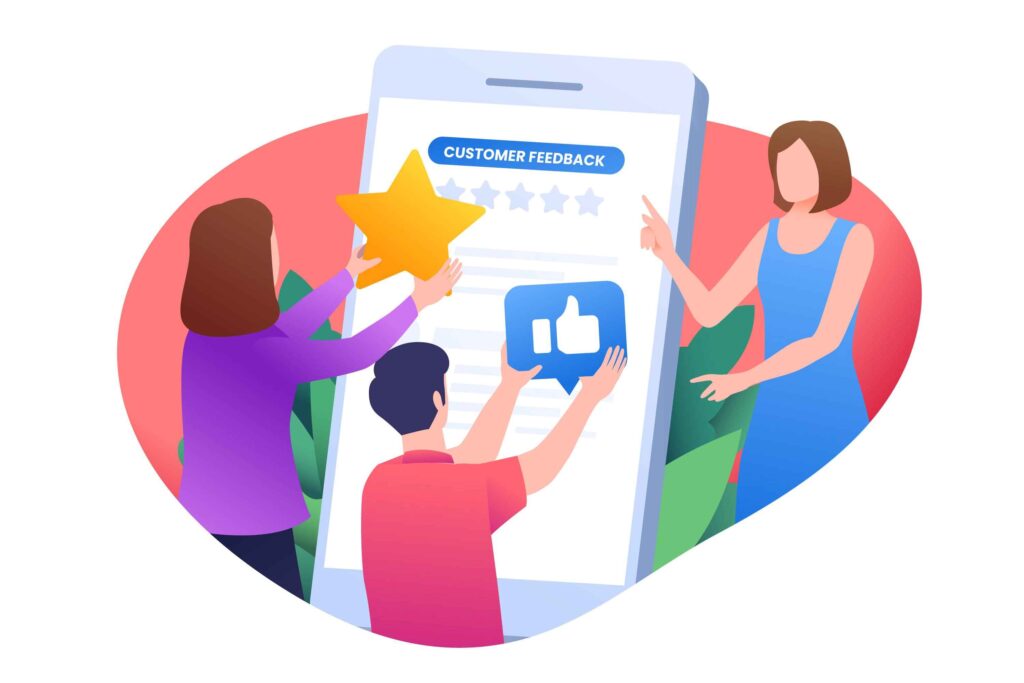Kitsap Website Mastery: Design Strategies to Draw More Customers
In the digital era, having a well-crafted website is essential for attracting and retaining customers. Small businesses in Kitsap County can utilize targeted design strategies to boost their online presence and achieve greater success.
Why Website Design Matters for Small Businesses

First Impressions Count
When a potential customer visits your website, the first thing they notice is its design. This initial impression can determine whether they choose to stay and explore your business or leave immediately. Just like meeting someone for the first time, if your website looks professional and is easy to use, people are more likely to trust your business.
Building Trust
A professional website helps to build trust with your visitors. If your site looks outdated or difficult to navigate, customers might think your business is unreliable. A clean, modern design shows that you care about your business and your customers.
Encouraging Conversions
“Conversions” refer to the actions you want visitors to take on your website, such as making a purchase, signing up for a newsletter, or contacting you for more information. A user-friendly website makes it easy for visitors to take these actions, which can help you achieve your business goals.
Key Tips for Success
Here are some simple tips to help you design a successful website for your small business in Kitsap County:
- Mobile-Friendly Design: Ensure your website works well on both computers and mobile devices. Many people use their phones to browse the internet, so your site should be easy to navigate on all devices.
- Fast Loading Speed: People don’t like waiting for a website to load. Aim for your site to load in under three seconds. This can be achieved by using smaller image files and a good web hosting service.
- Clear Calls-to-Action (CTAs): Make it obvious what you want visitors to do. Use buttons and links that stand out, such as “Contact Us” or “Buy Now.”
- High-Quality Visuals: Use good-quality photos and videos that represent your business. Avoid using generic stock photos that don’t feel personal.
- Simple Navigation: Make sure your website is easy to navigate. Use a clear menu and group related pages together so visitors can find what they need quickly.
By following these tips, you can create a website that not only looks good but also helps attract and retain customers, driving success for your small business in Kitsap County.
Embrace a Mobile-First Approach

Mobile Usage is Increasing
More people now use their phones to browse the internet than they use desktop computers. This means your website needs to look and work well on mobile devices to reach the most customers.
What is Mobile-First Design?
A mobile-first design means you create your website with mobile users in mind from the start. This approach ensures your site works perfectly on small screens, like phones and tablets, before considering how it looks on larger screens, like desktops.
Responsive Design is Key
A responsive website automatically adjusts to fit any screen size, providing a smooth experience whether someone is using a phone, tablet, or computer. This makes it easy for all users to navigate your site and find the information they need.
Benefits of Mobile-Friendly Websites
- Better User Experience: When your website works well on all devices, visitors can easily browse and interact with your content. This makes them more likely to stay on your site and become customers.
- Higher Search Rankings: Google favors mobile-friendly websites. If your site is optimized for mobile, it can appear higher in search results, making it easier for potential customers to find you.
Practical Steps
- Test Your Site on Mobile Devices: Regularly check how your website looks and functions on different phones and tablets. This helps you identify and fix any issues.
- Simplify Your Design: Keep your website design clean and straightforward. Avoid clutter and ensure buttons and links are easy to click on small screens.
- Prioritize Speed: Mobile users expect fast loading times. Optimize your images and content to ensure your site loads quickly on mobile devices.
By embracing a mobile-first approach, you ensure your website reaches more customers, offers a great user experience, and ranks higher on search engines, ultimately helping your small business succeed.
Optimize Loading Speed

Why Speed Matters
When people visit your website, they expect it to load quickly. If it takes too long, they get frustrated and leave. This can cause you to lose potential customers.
Goal: Under Three Seconds
Try to make sure your website loads in less than three seconds. Faster websites keep visitors happy and encourage them to stay longer.
How to Improve Loading Speed
- Compress Images: Large images can slow down your website. Use tools to reduce the file size of your images without losing quality. This helps your pages load faster.
- Reliable Hosting Service: Choose a good web hosting service. A reliable host ensures your website runs smoothly and loads quickly. It’s worth investing in a quality host to improve your site’s performance.
- Implement Caching Strategies: Caching temporarily stores parts of your website, so it loads faster for returning visitors. Use caching plugins or ask your web developer to set this up for you.
By optimizing your website’s loading speed, you create a better experience for visitors, which can help keep them on your site and turn them into customers.
Clear and Compelling CTAs

What are CTAs?
CTAs, or calls-to-action, are prompts on your website that encourage visitors to take a specific action. These actions could include buying a product, signing up for a newsletter, or contacting you for more information.
Importance of Clear CTAs
Clear CTAs tell your visitors exactly what you want them to do next. If your CTAs are confusing or hard to find, visitors might leave your site without taking any action.
How to Make CTAs Compelling
- Use Strong, Action-Oriented Language: Your CTAs should clearly tell visitors what to do. Phrases like “Get a Free Quote Today” or “Sign Up for Exclusive Offers” are direct and encourage immediate action.
- Strategic Placement: Place your CTAs where visitors can easily see them, such as at the top of your page, in the middle of your content, and at the end of a section. This ensures visitors encounter them as they navigate your site.
- Contrasting Colors: Use colors that stand out from the rest of your website to make your CTAs noticeable. For example, if your website’s main color is blue, use a bright color like orange or green for your CTA buttons.
By having clear and compelling CTAs, you guide your visitors on what to do next, increasing the chances they will engage with your business. This can lead to more sales, sign-ups, and inquiries, helping your small business grow.
High-Quality Visuals

Why Visuals Matter
Visual content, like images and videos, is very important for grabbing the attention of visitors to your website. Good visuals make your website more attractive and engaging.
Use High-Quality Images and Videos
Ensure that the images and videos on your website are clear, sharp, and of high quality. Blurry or low-quality visuals can make your site look unprofessional and can turn visitors away.
Reflect Your Brand
Choose visuals that match the look and feel of your brand. If your business has a specific color scheme or style, your images and videos should reflect that to create a cohesive and professional appearance.
Avoid Generic Stock Photos
Stock photos are generic images available for anyone to use, and they can make your site look bland and impersonal. Instead, use real photos of your products, team members, or happy customers. This adds a personal touch and makes your business seem more trustworthy and authentic.
Showcase Real Products and People
Show real examples of what your business offers. If you sell products, use high-quality photos of those products. If you provide services, include images or videos of your team in action or testimonials from satisfied customers.
By using high-quality visuals that resonate with your brand, you can create a more engaging and trustworthy website, helping to attract and retain customers.
Simplify Navigation

Why Simple Navigation is Important
Navigation is how visitors move around your website. If your site is easy to navigate, visitors can quickly find what they’re looking for. This keeps them happy and encourages them to stay longer.
Use a Clean, Well-Structured Menu
Your website menu should be simple and well-organized. A clean menu means it’s not cluttered with too many options. Organize the menu so that the most important pages are easy to find. For example, include main sections like Home, About Us, Services, Products, and Contact.
Include a Search Bar
A search bar helps visitors find specific information quickly. Place the search bar in a noticeable spot, like at the top of the page. This way, if visitors can’t find something in the menu, they can easily search for it.
Group Related Pages Under Relevant Categories
Organize your pages into categories that make sense. For example, if you have a bakery, group all your product pages (cakes, pastries, bread) under a “Products” category. This helps visitors find related information easily without getting lost.
By simplifying navigation with a clean menu, a search bar, and well-organized categories, you make it easy for visitors to find what they need. This improves their experience on your site and makes them more likely to become customers.
Strong SEO Practices

What is SEO?
SEO, or Search Engine Optimization, is a set of practices designed to make your website appear higher in search engine results like Google. This helps more people find your website when they search for related topics.
Why is SEO Important?
SEO helps attract organic traffic, which means visitors who find your website through search engines without paid ads. Higher search rankings can lead to more visitors and potential customers.
How to Optimize Your Website
- Use Relevant Keywords
Keywords are words or phrases that people type into search engines. For example, if you want people to find your site when they search for “Kitsap website,” use this phrase naturally in your content. Include it in your page titles, headings, and throughout your text. - Create Unique Meta Titles and Descriptions
Each page on your website should have a unique meta title and description. These are snippets of text that appear in search engine results. A good meta title and description help search engines understand what your page is about and encourage people to click on your link. - Regularly Update Your Blog with Valuable Content
Adding new content to your blog keeps your website fresh and relevant. Write about topics that interest your audience and include relevant keywords. For example, if you run a pet store, you might write about pet care tips or new products. Regular updates show search engines that your site is active and valuable.
By following these strong SEO practices, you can improve your website’s visibility on search engines, attract more organic traffic, and ultimately grow your small business.
You can also get more information about Kitsap Website visit this link
Effective Use of White Space
What is White Space?
White space, also known as negative space, is the empty space between different elements on your website, such as text, images, and buttons. It’s not necessarily white; it just means the space is free of content.
Why is White Space Important?
White space improves readability and makes your website easier to navigate. It prevents your site from looking cluttered, which can overwhelm visitors and make it hard for them to find what they’re looking for.
How White Space Enhances Readability
When there’s enough space around your text, it’s easier to read. If everything is too close together, visitors might skip over important information because it looks too crowded. By adding white space, you make your content more inviting and easier to understand.
Making Important Elements Stand Out
White space helps important elements like headings, images, and buttons stand out. For example, if you have a “Buy Now” button, surrounding it with white space will make it more noticeable and encourage visitors to click on it.
Balancing Text and Visuals
A good balance between text and visuals, with plenty of white space, creates a clean and organized look. This makes your website more attractive and improves the overall user experience.
By effectively using white space, you can make your website more readable, highlight important elements, and create a pleasant experience for your visitors. This can help keep them on your site longer and encourage them to engage with your business.
User-Centric Design

What is User-Centric Design?
User-centric design means creating your website with the needs and preferences of your visitors in mind. It’s about making the site easy and enjoyable for them to use.
Understanding Your Audience
To design a user-friendly website, you first need to understand your audience. Who are they? What are they looking for? What problems do they need to solve? Knowing this helps you create a site that meets their needs.
Creating User Personas
User personas are fictional characters that represent your typical customers. They include details like age, interests, job, and online behavior. For example, if you own a pet store, one persona might be “Samantha, a 30-year-old dog owner who looks for organic pet food online.” These personas help you design your website for real people.
Conducting Usability Testing
Usability testing involves watching real people use your website to see what works well and what doesn’t. You can identify pain points (areas where users struggle) and make improvements. For instance, if users have trouble finding the contact page, you might need to make the menu clearer.
Making Your Website Intuitive and User-Friendly
An intuitive website is easy to understand and navigate without needing instructions. Here are some tips:
- Simple Navigation: Make sure visitors can easily find what they need. Use clear menus and labels.
- Consistent Design: Keep the design consistent across all pages. Use the same colors, fonts, and styles so visitors know they’re still on your site.
- Clear Instructions: Guide visitors on what to do next with clear instructions and calls to action (like “Sign Up” or “Contact Us”).
- Fast Loading Times: Ensure your site loads quickly. Slow websites frustrate users and make them leave.
By focusing on user-centric design, you create a website that meets the needs of your visitors, making it easier for them to interact with your business. This can lead to more satisfied customers and better business results.
Leveraging Social Proof

What is Social Proof?
Social proof is the idea that people are influenced by the actions and opinions of others. When potential customers see that others have had a good experience with your business, they are more likely to trust and choose your services.
Types of Social Proof
- Customer Reviews: These are comments and ratings left by your customers about their experience with your business. Positive reviews show that others have had good experiences.
- Testimonials: These are statements from satisfied customers that describe how your product or service helped them. They are often more detailed than reviews and can be very persuasive.
- Case Studies: These are detailed stories about how your business solved a problem for a customer. They show your expertise and the real benefits of your services.
- Awards and Recognitions: If your business has won any awards or received recognitions, highlight these on your website. They show that your business is credible and trustworthy.
How to Use Social Proof
- Display Reviews and Testimonials: Place customer reviews and testimonials prominently on your website. Use quotes and star ratings to make them stand out.
- Create Case Studies: Write detailed stories about how you helped specific customers. Include their problem, your solution, and the positive outcome. Share these on your website and social media.
- Highlight Awards and Recognitions: If you have any awards or recognitions, feature them on your homepage or in a dedicated section. Use images of the awards and explain what they mean.
Why Social Proof is Important
Social proof builds credibility and trust. When potential customers see that others have had positive experiences with your business, they feel more confident in choosing you. This can lead to more inquiries, sales, and long-term customers.
By leveraging social proof, you show potential customers that your business is reliable and trusted by others, making them more likely to choose your services.
Effective Content Strategy

Why Content is Important
The phrase “content is king” means that the information you share on your website is very important. Good content attracts visitors, keeps them engaged, and encourages them to become customers.
What is a Content Strategy?
A content strategy is a plan for creating and sharing content that provides value to your audience. This includes blog posts, videos, and infographics. A good strategy helps you reach and connect with your audience effectively.
Steps to Develop an Effective Content Strategy
- Identify Your Audience: Understand who your audience is and what they care about. This helps you create content that interests them. For example, if you run a gardening business, your audience might be interested in tips for plant care.
- Choose Relevant Topics: Focus on topics that are related to your industry and useful to your audience. For instance, if you own a bakery, you could write about baking tips, recipes, and the benefits of different ingredients.
- Create Valuable Content: Make sure your content is informative and helpful. This could include how-to guides, tips, industry news, and case studies. The goal is to provide something of value that helps your audience.
- Regularly Publish Content: Consistency is key. Regularly update your blog, create new videos, and share infographics. This keeps your audience engaged and shows that your business is active.
- Use Different Formats: People like to consume content in different ways. Some prefer reading articles, others like watching videos, and some enjoy looking at infographics. Use a mix of formats to reach a wider audience.
Examples of Content
- Blog Posts: Write articles that provide useful information or insights about your industry. For example, a plumber might write about common plumbing problems and how to fix them.
- Videos: Create videos that demonstrate your products, show behind-the-scenes of your business, or offer tutorials. A fitness trainer might post workout videos.
- Infographics: Use infographics to visually present information or statistics. They are easy to share and can make complex information easier to understand.
By developing an effective content strategy, you can attract and engage your audience, build trust, and ultimately grow your business. Regularly publishing valuable content keeps your audience coming back and positions you as an expert in your field.
Strong Security Measures

Why Security is Important
Security is critical for any website. It protects your business and your customers from threats like hacking and data theft. A secure website builds trust and ensures that visitors feel safe using your site.
Key Security Measures
- SSL Certificates: An SSL certificate encrypts the data transferred between your website and your visitors, such as personal information and payment details. When you have an SSL certificate, your website address will start with “https://” instead of “http://”, and you’ll see a padlock icon in the browser’s address bar. This shows visitors that their data is safe.
- Trust Badges: Displaying trust badges on your website can reassure visitors that your site is secure. These badges can indicate things like SSL encryption, secure payment methods, or certifications from trusted security companies. Trust badges help build confidence in your business.
- Regular Updates: Websites often use software and plugins to add features and functionality. It’s essential to keep these updated because updates often include security fixes. Regularly updating your website and its components helps prevent vulnerabilities that hackers could exploit.
How to Implement These Measures
- Get an SSL Certificate: You can get an SSL certificate from your web hosting provider or a certificate authority. Many hosting providers offer free SSL certificates as part of their services.
- Display Trust Badges: Once your website is secure, you can display trust badges. For example, if you use a service like Norton or McAfee for security, you can show their badge on your site. Some e-commerce platforms also provide badges for secure payment methods.
- Regularly Update Your Website: Set a schedule to check for updates to your website software and plugins. Many platforms, like WordPress, notify you when updates are available. Applying these updates promptly keeps your site secure.
By implementing strong security measures, you protect your business and your customers’ data, build trust, and ensure a safe online experience for everyone.
Utilizing Local SEO

What is Local SEO?
Local SEO (Search Engine Optimization) is the practice of optimizing your online presence to attract more business from relevant local searches. For example, when someone searches for “coffee shop near me,” businesses that have optimized their local SEO will appear in the search results.
Why is Local SEO Important for Small Businesses?
As a small business in Kitsap County, local SEO helps you reach potential customers in your area. When people in your community search for the services or products you offer, local SEO ensures they find your business.
Key Steps to Optimize Local SEO
- Claim Your Google My Business Listing
Google My Business is a free tool that allows you to manage how your business appears on Google Search and Maps. By claiming your listing, you can provide important information like your address, phone number, hours of operation, and photos. This makes it easier for local customers to find and contact you. - Use Location-Specific Keywords
Keywords are phrases that people use to search for things online. For local SEO, include keywords that mention your location and what you offer. For example, use phrases like “Kitsap website design” or “best pizza in Kitsap County.” This helps search engines understand that your business serves a specific area. - Encourage Positive Reviews
Reviews play a significant role in local SEO. Encourage satisfied customers to leave positive reviews on your Google My Business listing and other review sites like Yelp. Positive reviews improve your ranking in local search results and build trust with potential customers.
How to Implement These Steps
- Claim Your Google My Business Listing: Go to the Google My Business website and follow the steps to verify your business. Once verified, fill out your business profile completely and accurately. Add photos, business hours, and a description of what you offer.
- Use Location-Specific Keywords: Include location-specific keywords in various parts of your website, such as page titles, headings, and content. For example, if you own a bakery, you might write a blog post titled “Top 5 Cakes in Kitsap County” and mention your location throughout the article.
- Encourage Positive Reviews: After a successful transaction or service, kindly ask your customers to leave a review. You can send a follow-up email with a direct link to your review page or have a sign in your store with instructions on how to leave a review.
By utilizing local SEO, you can make your business more visible to people in your community, attract more local customers, and grow your business.
Incorporating Live Chat

What is Live Chat?
Live chat is a feature on your website that allows visitors to communicate with you or your support team in real-time through a chat window. It’s like having a virtual assistant ready to help customers instantly.
Why is Live Chat Important?
Live chat improves customer service by providing immediate assistance. When visitors have questions or need help, they can get answers right away without waiting for an email response or making a phone call. This instant support enhances their experience on your site.
Benefits of Live Chat
- Improves User Experience: Visitors appreciate quick and easy access to help. Live chat makes their experience on your website more pleasant and efficient, which can lead to higher satisfaction.
- Increases Conversion Rates: Conversion rates refer to the percentage of visitors who take a desired action, like making a purchase or signing up for a newsletter. Live chat can answer questions that might be preventing someone from making a decision, thereby increasing the likelihood they will complete the action.
How to Implement Live Chat
- Choose a Live Chat Service: There are many live chat services available, such as LiveChat, Intercom, and Zendesk. Choose one that fits your needs and budget. These services typically provide easy-to-use software that you can add to your website.
- Set Up the Chat Window: Customize the chat window to match your website’s design. Decide where it will appear on your site, such as in the bottom corner of the screen. Make sure it’s visible but not intrusive.
- Train Your Support Team: Ensure that the people who will be answering the live chat are well-trained. They should be knowledgeable about your products or services and skilled in providing friendly, helpful customer service.
- Monitor and Respond Promptly: Set up notifications to alert your team when a new chat request comes in. Aim to respond as quickly as possible to keep visitors engaged and satisfied.
Example of Live Chat in Action
Imagine you run an online store selling handmade crafts. A visitor browsing your site has a question about the materials used in a particular product. With live chat, they can quickly ask their question and get an immediate response, helping them feel confident in their purchase.
By incorporating live chat, you provide instant support to your visitors, enhance their experience, and increase the chances they will become customers. This tool can significantly improve customer satisfaction and boost your business’s success.
Continuous Improvement

Why Continuous Improvement is Important
A successful website is never truly finished. Technology, customer preferences, and business needs are always changing. To keep your website effective, you need to regularly make improvements based on how it’s performing.
How to Analyze Your Website’s Performance
- Use Tools like Google Analytics: Google Analytics is a free tool that provides detailed information about how visitors interact with your website. It can show you things like how many people visit your site, how long they stay, and which pages they visit most.
- Monitor Key Metrics: Pay attention to important performance metrics. Here are some key ones:
- Bounce Rate: This is the percentage of visitors who leave your website after viewing only one page. A high bounce rate might mean that visitors aren’t finding what they’re looking for or that your site isn’t engaging.
- Session Duration: This tells you how long visitors stay on your site. Longer session durations usually mean that visitors are finding your content interesting and useful.
- Conversion Rates: This is the percentage of visitors who take a desired action, like making a purchase or filling out a contact form. Higher conversion rates indicate that your site is effectively encouraging visitors to become customers.
How to Use This Data for Improvements
- Identify Problem Areas: Use the data to see where visitors might be having trouble. For example, if you notice a high bounce rate on a particular page, that page might need better content or a clearer call-to-action.
- Test Changes: Make small changes to see if they improve performance. This could include updating content, changing the layout, or improving load times. Use A/B testing, where you compare two versions of a page to see which performs better.
- Keep Updating: Regularly review your website’s performance data and make adjustments as needed. This ensures your site stays relevant and effective as trends and technologies evolve.
Example of Continuous Improvement
Suppose you run a local bakery and notice that many visitors leave your site quickly after viewing the homepage. You decide to add more engaging content, like pictures of your best-selling cakes and a special offer for first-time customers. After making these changes, you see that visitors are spending more time on your site and more people are placing orders.
By continuously improving your website, you ensure it remains effective and engaging for your visitors. Regular analysis and updates help you meet your customers’ needs and achieve better business results.
Understand This
The Importance of a Well-Designed Website
A well-designed website is crucial for the success of your small business in Kitsap County. It can help you attract more customers, build trust, and encourage visitors to take actions like making a purchase or contacting you.
Key Tips for Success
- Focus on User Experience: Make sure your website is easy to navigate and looks good on all devices. A pleasant user experience keeps visitors on your site longer and makes them more likely to become customers.
- Use Strong SEO Practices: Optimize your website for search engines so that more people can find you online. Use relevant keywords, create unique content, and encourage positive reviews to improve your search rankings.
- Continuously Improve Your Website: Regularly check your website’s performance and make updates as needed. Use tools like Google Analytics to see how visitors interact with your site and identify areas for improvement.
The Benefits of Investing in Your Website
Investing time and resources into creating and maintaining a well-designed website can lead to a prosperous future for your small business. A good website helps you stand out in the competitive digital landscape and reach more potential customers.
By following these design tips, you can create a successful Kitsap website that supports your business goals and helps you grow.
